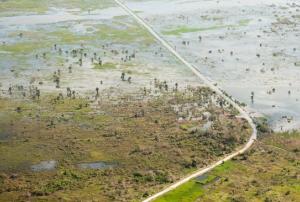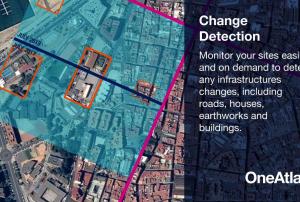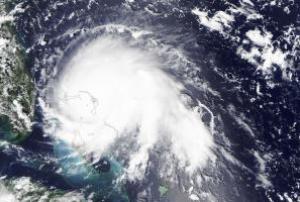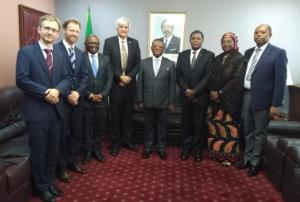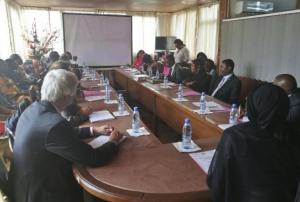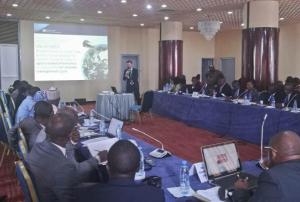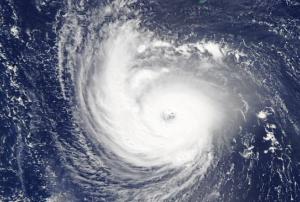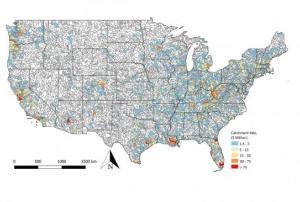Severe Storm
Definition
Facts and figures
Further information
UN-SPIDER Regional Support Offices with hazard-specific expertise
Related content on the Knowledge Portal
In recent years, Mozambique has suffered severe floods and droughts that have impacted urban and rural communities throughout the country. In the March and April 2019, tropical cyclones Idai and Kenneth triggered major floods in Mozambique, Malawi, Zimbabwe, and Comoros. The Port of Beira was hard hit, as cyclone Idai destroyed transmission lines and bridges, leaving the port without access to these lifelines for several days. In contrast the powerful El Niño event of 2016 triggered major droughts that affected most of the country. Thousands of farmers lost their crops and their cattle and had to rely on humanitarian assistance to cope with the impacts of this event.
Taking into consideration the benefits of the use of satellite imagery to map the geographic extent of floods and to monitor the effects of drought on vegetation; the Federal University of Santa Maria of Brazil (UFSM), in its role as a UN-SPIDER Regional Support Office (RSO); and UN-SPIDER…
read more10/08/2020- Publishing institution:
On 1 April 1960, NASA sent the Television Infrared Observation Satellite (TIROS-1) into space. TIROS-1 was developed during the 1950s and, after years of experimental programmes and attempts, became the world’s first weather satellite. Since weather satellites were a new technology at that time, the mission also tested various design issues for spacecraft, such as instruments, data, and operational parameters, in order to improve satellite applications for Earth-bound decisions. TIROS-1 thus paved the way for further weather satellite development and research. Today, weather satellites provide highly accurate and near-real-time measurements that can efficiently monitor and forecast extreme weather events, such as floods and droughts, as well as enhance the understanding of the climate and of the Earth as a whole.
…
read more16/04/2020The Japan Aerospace Exploration Agency (JAXA) has released the JAXA Climate Rainfall Watch website to monitor extreme weather and climate over the world. The website provides hourly global measurements of precipitation as well as forecasts about heavy rainfall and drought in different temporal scales (daily, pentad, weekly, 10-days and monthly). The satellite-based global rainfall maps produce highly accurate measurements that can help better understand the changing climate, improve forecasts of extreme weather events, such as floods and droughts, minimize their damage and strengthen early warning systems.
The Climate Rainfall Watch website monitors heavy rainfall and drought in near-real-time and collects and stores data from previous months. The website calculates rainfall in percentile: heavy rain is indicated by…
read more15/04/2020- OneAtlas is a collaborative environment to easily access very high resolution imagery, perform large-scale image processing, extract industry specific insights and benefit from Airbus assets to develop solutions. The services include infrastructure change detection, vehicle detection & counting and will soon cover aircraft detection and land use change detection as well . Airbus provides the services through a buy-what-you-need option. It is possible to test the functionalities with a 30-days Free Trial.Publishing institution:
Hurricane Dorian, a category 5 hurricane, made landfall at Elboy Cay, Abaco, Bahamas, on 1 September. The hurricane had devastating effects, especially on the islands of Grand Bahama and Abaco, as they had prolonged exposure to extreme hurricane force winds, storm surges, flooding and intense rainfall.
The Abaco Islands and Grand Bahama, in the north of the archipelago, were battered by the storm for two days which decimated whole areas, leaving houses without roofs, scattered debris and flooding as up to 35 inches of rain fell.
Dorian is the strongest hurricane on record to make landfall in Bahamas and caused massive storm surges and flooding of entire villages, destroyed thousands of homes, downed power and telecommunication lines, put health facilities out of action, made roads impassable and contaminated the drinking water system with salt water.
Both the…
read moreTropical storms have major impacts, including loss of life and destruction of property. In 2017 alone, the United States experienced three tropical storms with more than $1 billion in losses. Open source satellite data can be used before, during, and after a storm for monitoring and response. A storm’s intensity, path, wind, precipitation, storm surge, and flooding can be derived from historical and near real-time satellite observations. In this introductory webinar, participants will learn about the NASA data and tools they can use to monitor tropical storms.
Learning Objectives:
… read moreUpon the request of the Ministry of Territorial Administration (MINAT), Government of Cameroon, UN-SPIDER carried out a week-long Institutional Strengthening Mission (ISM) to Yaoundé from 15 to 19 July. The mission aimed to strengthen the capacities of the Department of Civil Protection (DPC) of Cameroon in using space-based information in all phases of the disaster management cycle. It was the third UN-SPIDER mission to Cameroon after a Technical Advisory Mission (TAM) in 2011 and an Institutional Strengthening Mission (ISM) in 2012, the latter including a training course on “Remote Sensing for Disaster Management”.
During the mission, UN-SPIDER experts and an expert from its Nigeria Regional…
read moreRegional Support Offices mentioned:22/07/2019- Tropical Cyclones stalling along the North Atlantic coast lead to more rain in the confined location
According to a new study by scientists from NASA and NOAA, tropical cyclones stall more frequently and stay longer near the coastline. This potentially leads to more precipitation over confined locations and thus an aggravation of tropical cyclone hazards for coastal populations.
In the new study, scientists Hall and Kossin examined all tropical cyclones from 1944-2017 in the National Hurricane Center's HURDAT2 database to analyze the position and calculate the average forward speed of each storm that has reached the coastal regions and to investigate the direction of the storm track. They found that 66 storms in the North Atlantic stayed in a coastal region for more than two days. Almost half of these 66 stalls appeared in the last third of the 74 years they analyzed, while only 17 appeared in the first third. In addition, they found that long-lasting storms were more likely to contain meanders.
The trajectory of a tropical cyclone…
read more04/07/2019 A recent study, published in the Water Resource Research journal, presents a new method for a spatially realistic national flood risk assessment.
Researchers expanded an existing statistical model, based on U.S. Geological Survey (USGS) river flow data, to simulate a thousand years of potential flood events. By calculating the damage for each event in dollars, they were able to estimate the probability of the United States suffering particular annual flood damages.
Traditional risk flood analysis models assume that the impacts on the entire flood-affected area are the same, but flooding can be more severe in some areas than in others, even during the same flood event. At national scales, traditional risk analyses can only estimate the average annual loss. To estimate the total annual losses that might occur in more extreme flooding…
read more04/07/2019

